 "user314" (user314)
"user314" (user314)
08/07/2020 at 11:00 • Filed to: flightline, Planelopnik, planelopnik history, a-12, Blackbird, habu, sr-71
 3
3
 24
24
 "user314" (user314)
"user314" (user314)
08/07/2020 at 11:00 • Filed to: flightline, Planelopnik, planelopnik history, a-12, Blackbird, habu, sr-71 |  3 3
|  24 24 |
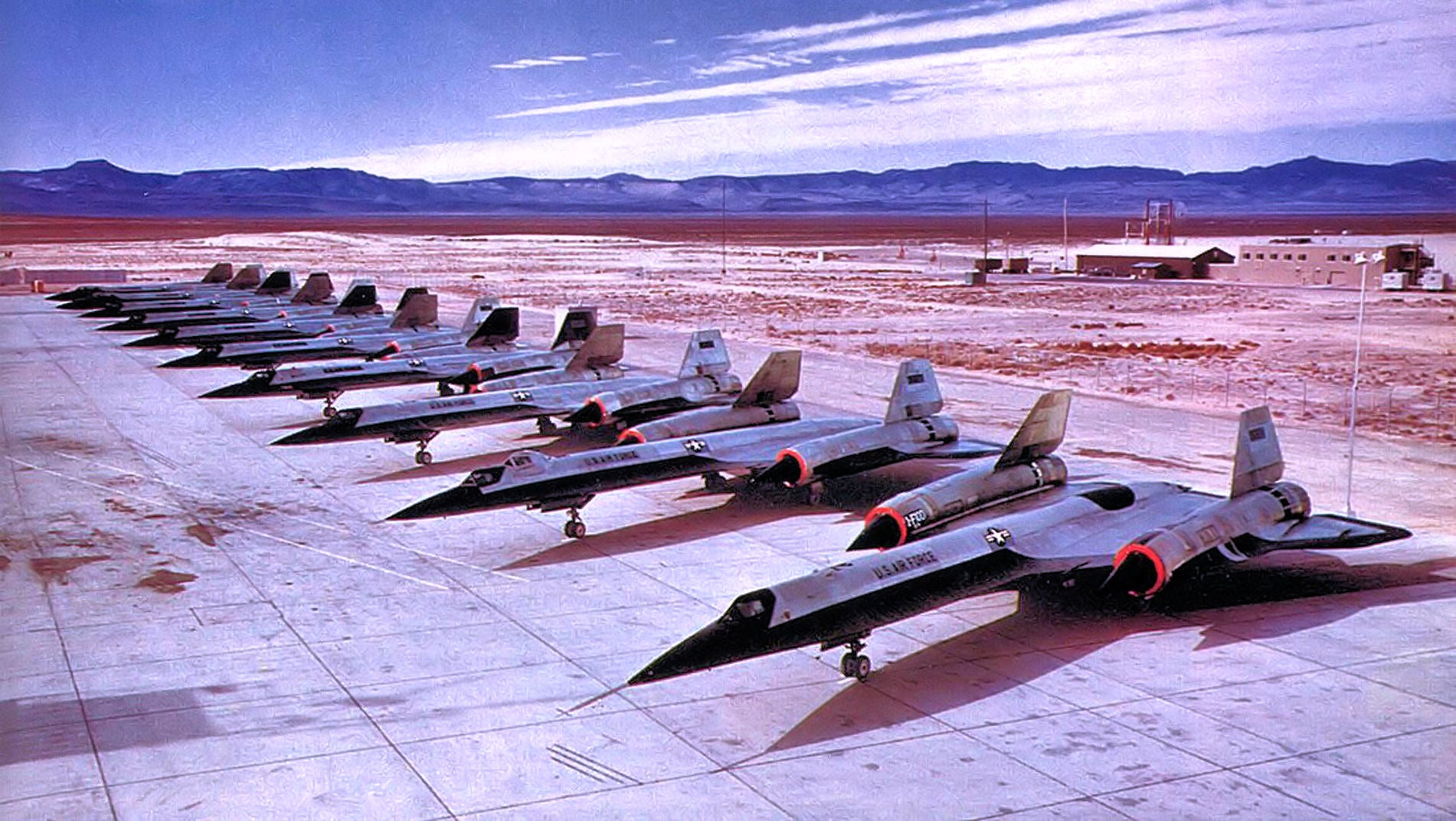
Lockheed A-12s and YF-12s lined up at Plane 42, Palmdale California
!!!error: Indecipherable SUB-paragraph formatting!!! , Palmdale, CA, circa 1968 .
In August of 1956, !!!error: Indecipherable SUB-paragraph formatting!!! , head of the CIA’s U-2 program, gathered together a group of experts under the code name !!!error: Indecipherable SUB-paragraph formatting!!! , with the goal of reducing the radar cross section ( !!!error: Indecipherable SUB-paragraph formatting!!! ) of Lockheed’s !!!error: Indecipherable SUB-paragraph formatting!!! to the point that Soviet tracking systems were no longer effective. Among the solutions proposed was:
‘ !!!error: Indecipherable SUB-paragraph formatting!!! ’ a pattern of conductive ink that was printed on a flexible material which was then glued to the aircraft’s honeycomb structure. Though initially effective, ‘Wallpaper’ proved to be an excellent insulator, resulting in a fatal accident on a test flight.
‘ !!!error: Indecipherable SUB-paragraph formatting!!! ’, wires were stretched parallel to the leading and trailing edges of the wings and tails, anchored to fiberglass poles mounted to the wingtips and the tips of the horizontal stabilizers. Other lines were run from the nose to the poles to protect the intakes. Though effective against low-frequency (<70 MHz) radar, the wires created drag, adversely affecting range and max altitude.
‘Wire’, similar to ‘Tr apeze’, this system used wire strung horizontally from the nose of the aircraft to the tail, and horizontally from the leading edge to the trailing edge of the vertical stabilizer. Iron ferrite beads were then added to tune the system to the correct frequency. As with ‘Trapeze’, this system was rejected for the drag it created.
With the failure of RAINBOW, Biss ell shifted the group’s focus to a new project, !!!error: Indecipherable SUB-paragraph formatting!!! , to develop a replacement for the U-2, one with reduced RCS. Several designs were con sidered, all of them attempting to take advantage of the blip/scan ratio effect, allowing a fast moving contact to become lost in clutter. Convair advanced !!!error: Indecipherable SUB-paragraph formatting!!! (“First Invisible Super Hustler”), a ramjet powered aircraft carried by the B-58B then under study. Boeing presented a design for an inflatable aircraft powered by liquid hydrogen, while the Navy’s plan involved a rubber vehicle launched from a submarine, carried to altitude by a balloon, boosted by rockets and then cruising with ramjets. Lockheed proposed the !!!error: Indecipherable SUB-paragraph formatting!!! , an overscaled F-104 propelled by wingtip hydrogen powered ramjets, the !!!error: Indecipherable SUB-paragraph formatting!!! , which was subsonic but featured a low-RCS design, and the first of a succession of ‘ !!!error: Indecipherable SUB-paragraph formatting!!! ’ designs (the U-2 being developed under Angel), with the A-1 being powered by turbojets and the A-2 using ramjets powered by !!!error: Indecipherable SUB-paragraph formatting!!! . Boeing’s design was quickly dropped, as was the Navy proposal once Kelly Johnson calculated that the balloon needed would be one mile in diameter. Both FISH and Archangel were revised, with Convair reworking their design after the B-58B was canceled. Now featuring Convair’s signature delta wing, p owered by P&W !!!error: Indecipherable SUB-paragraph formatting!!! engines, and constructed with a mix of fiberglass for RCS reduction and !!!error: Indecipherable SUB-paragraph formatting!!! for heat-resistance, the aircraft was called !!!error: Indecipherable SUB-paragraph formatting!!! . GUSTO became OXCART, and Lockheed’s had iterated to the !!!error: Indecipherable SUB-paragraph formatting!!! , also featuring a delta wing and J58 engines. Lockheed’s design did not feature any RCS limiting measures as Kingfish did, so Lockheed further refined the A-11 into the !!!error: Indecipherable SUB-paragraph formatting!!! .
The forward fuselage of the A-12 was roughly the same as the A-11, however chines were added from the nose down the length of the fuselage , and the J 58 engines were now housed in two nacelles, topped with canted rudders, half-way out in the delta wing. The chines and leading edges were fabricated from a mix of titanium fillets and ones composed of a high-heat resistant composite of ferrite, asbestos and silicon laminated with epoxy resin. Lockheed also produced rudders made of titanium and others of the composite; the A-12s were fitted with the titanium units most often, while the SR-71s used the composite models. The amount of titanium needed quickly outstripped what Titanium Metals Corp could supply, so the CIA stepped in to purchase the metal from an unlikely source: the Soviet Union, then the largest supplier.
Lockheed’s Advanced Develop Projects, nickna med the !!!error: Indecipherable SUB-paragraph formatting!!! , quickly assembled the first of the A-12s, which due to production issues with the J 58 were powered by less powerful !!!error: Indecipherable SUB-paragraph formatting!!! engines. In order to maintain secrecy, the Skunk Works tapped Roadrunners Int’l to build !!!error: Indecipherable SUB-paragraph formatting!!! . The !!!error: Indecipherable SUB-paragraph formatting!!! took place on April 25th 1962, during which an issue was uncovered with the epoxy used to affix the titanium fillets (foreshadowing troubles that would haunt the A-12 and SR-71s for their entire service lives), which the plane shed down the length of the runway. !!!error: Indecipherable SUB-paragraph formatting!!! (which had to have been fun) and reattached in time for the plane’s official first flight on April 30th, with a flight to Mach 1.1 occurring on May 4th. The J75-equipped A-12s could achieve Mach 2.0, but by early in 1963 J58s were being fitted to the fleet, which could now reach Mach 3.35.
Four A-12s were lost during the test program:
!!!error: Indecipherable SUB-paragraph formatting!!!
was lost on May 24th 1963 due to an instrument failure. The pilot was able to safely eject.
!!!error: Indecipherable SUB-paragraph formatting!!!
crashed in July
of 1964 as a result of a failed pitch-control servo. The pilot ejected at an altitude of 200
feet and survived.
!!!error: Indecipherable SUB-paragraph formatting!!!
crashed due to the
Stability Augmentation System being wired backwards. The pilot successfully
ejected at 200 feet up.
!!!error: Indecipherable SUB-paragraph formatting!!!
crashed in January of 1967 after running out of fuel due to a faulty gauge. The pilot ejected but was unable to free himself from the seat and was killed when it hit the ground.
Despite being designed to overfly the USSR, the A-12 never undertook such a mission. In response to the 1960 shoot-down of Gary Powers, President Eisenhower banned all manned overflights of Russia (not to mention that the success of !!!error: Indecipherable SUB-paragraph formatting!!! and other satellites made such flights unnecessary ), and the U-2s had proved themselves capable of flying over Cuba. A-12s were then deployed to !!!error: Indecipherable SUB-paragraph formatting!!! in 1967 and began !!!error: Indecipherable SUB-paragraph formatting!!! : mapping SAM sites in North Vietnam. Flights over North Vietnam continued into 1968, along with several flights over North Korea in response to the seizure of the USS Pueblo. Vietnamese forces fired !!!error: Indecipherable SUB-paragraph formatting!!! SAMs at A-12s on numerous occasions, but while one was found to have propelled a piece of shrapnel into the wing of one plane, no aircraft was ever brought down.
The A-12 program had actually been canceled in 1966, a victim of reduced budgets and advancing technology. The A-12 was overtaken by the USAF’s rival
!!!error: Indecipherable SUB-paragraph formatting!!!
, which while slower and lower-flying, was more capable (boasting a pilot and sensor operator instead of the A-12's single pilot) and with a more varied fit of equipment. In June of 1968, the last A-12 loss occurred
when
!!!error: Indecipherable SUB-paragraph formatting!!!
disappeared
flying from Okinawa back to Palmdale. Approximately 20 minutes after refueling from a KC-135Q the automated telemetry system reported that
exhaust gas temperature for the right engine
had exceeded 860 degrees C. Several seconds later the fuel flow for that engine was reported at less than 7500 pounds per hour, and the system repeated the EGT error. Eight seconds after that, the system reported the same two issues, as well as the plane passing below 68,500 f
eet. There were no further transmissions, and the pilot did not respond to repeated attempts to communicate
. No debris was ever located, and the plane and
pilot were declared missi
ng and presumed lost
.
The remaining A-12s, AT-12 trainer, and M-21 were painted all black, given false USAF markings, and placed into storage for the next 20 years before being being !!!error: Indecipherable SUB-paragraph formatting!!! across the country to various museums.
The A-12 did not receive a formal nickname, partially because of the clandestine nature of its operation. Lockheed workers preferred calling it Cygnus, following Lockheed tradition of naming their planes after celestial bodies. It has also been referred to as Oxcart, the program name at the CIA, and Blackbird, though that name was applied to the SR-71 first. Civilians around the Kadena airbase on Okinawa referred to it as ‘ !!!error: Indecipherable SUB-paragraph formatting!!! ’, a local venomous snake. The name was taken up by flight crews, and when the SR-71 arrived at Kadena they too were called Habu.
 ttyymmnn
> user314
ttyymmnn
> user314
08/07/2020 at 11:01 |
|
All the Russian titanium.....
 SBA Thanks You For All The Fish
> user314
SBA Thanks You For All The Fish
> user314
08/07/2020 at 11:10 |
|
Hmmm.... are we sure this is at Palmdale?
Because I thought I’d seen this photo in B&W taken at “ somewhere that didn’t officially exist” in 1968.
 Future next gen S2000 owner
> user314
Future next gen S2000 owner
> user314
08/07/2020 at 11:11 |
|
Hey look, it’s Elon’s kid!
 ttyymmnn
> user314
ttyymmnn
> user314
08/07/2020 at 11:19 |
|
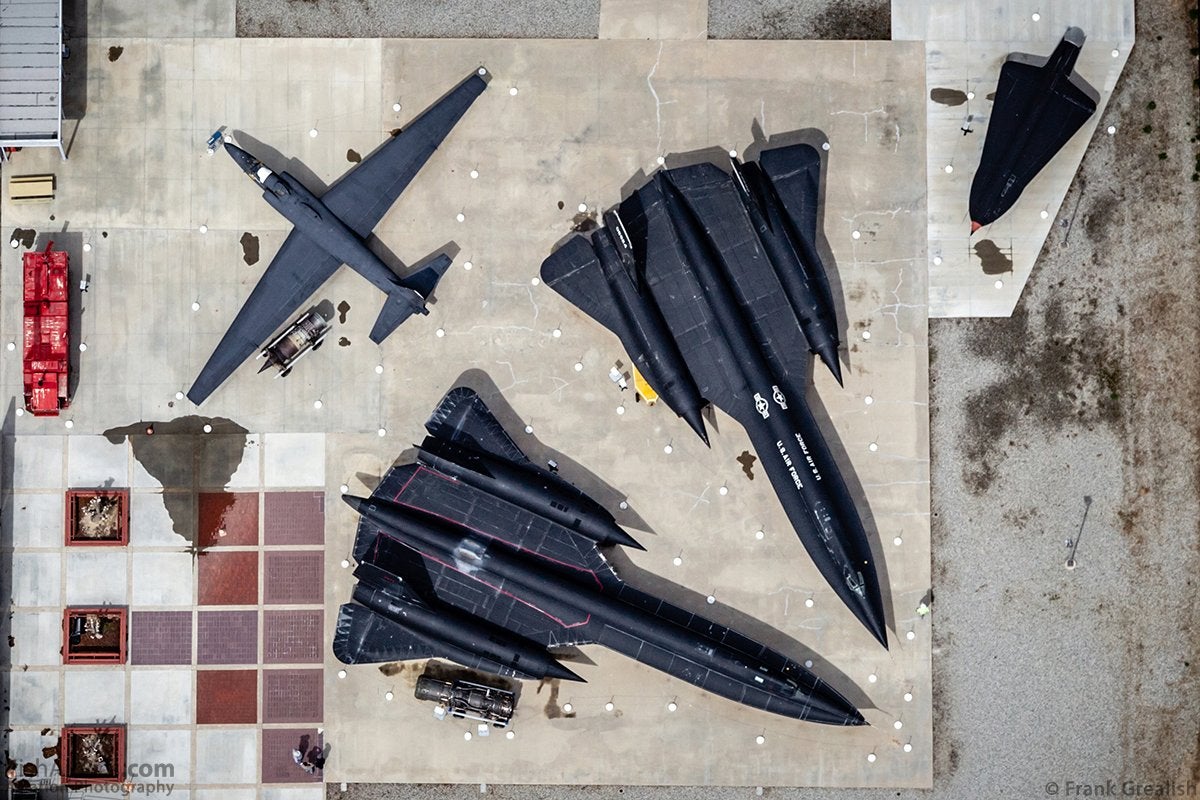
 user314
> ttyymmnn
user314
> ttyymmnn
08/07/2020 at 11:35 |
|
I don’t often do this, but

 user314
> SBA Thanks You For All The Fish
user314
> SBA Thanks You For All The Fish
08/07/2020 at 11:49 |
|
There appears to be some debate on that, but Wiki says Palmdale, so I'm going with that.
 BaconSandwich is tasty.
> user314
BaconSandwich is tasty.
> user314
08/07/2020 at 11:52 |
|
That whole thing about having to build a custom crate to move it. I had no idea. It also makes me think that they don’t make quite the same mistakes like that. I can’t imagine anyone transporting a large object like that without attracting unwanted attention on social media. I guess maybe these days they’d either build it more on site, or disguise it as something else?
 chaozbandit
> ttyymmnn
chaozbandit
> ttyymmnn
08/07/2020 at 12:12 |
|
I like the nasa photos too
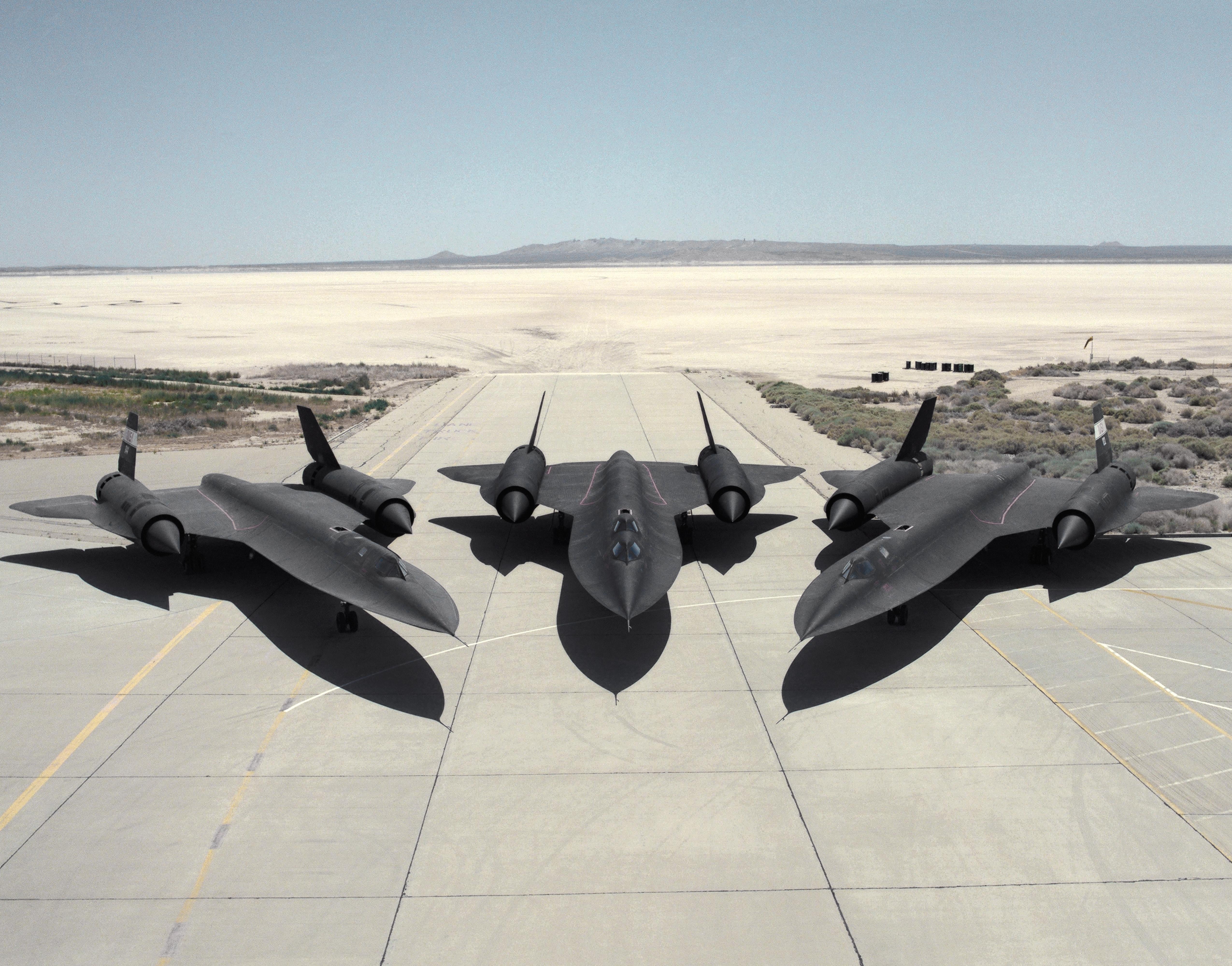
 SBA Thanks You For All The Fish
> Future next gen S2000 owner
SBA Thanks You For All The Fish
> Future next gen S2000 owner
08/07/2020 at 12:24 |
|
The SR-17?
 SBA Thanks You For All The Fish
> ttyymmnn
SBA Thanks You For All The Fish
> ttyymmnn
08/07/2020 at 12:26 |
|
That should be the Palmdale airpark open museum, right? Been a few years since I’ve been there.
I always wanted to get on-base at Edwards, where they have apparently compiled the worlds-greatest-test-airframe museum... that nobody except the chosen few with the right CAC card access will ever get to see.
They “might” have an annual open house, like the tour of Sedan Crater.
Both on my bucket list.
 SBA Thanks You For All The Fish
> user314
SBA Thanks You For All The Fish
> user314
08/07/2020 at 12:32 |
|
Yeah, I won’t argue , but will at least point out that the “mountains that close in the background” at Palmdale are the back side of the San Gabriels NE of Pasadena... Which look like this...

OTOH, the mesa-type formations behind the A-12s are very unique— and more in keeping with a certain geology 125 miles North of Las Vegas. But, I could be wrong, so I’ll shut my pedantic mouth.
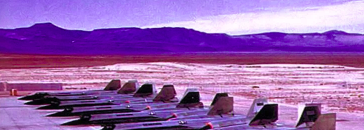
 ttyymmnn
> SBA Thanks You For All The Fish
ttyymmnn
> SBA Thanks You For All The Fish
08/07/2020 at 12:35 |
|
For more than 20 years, I played trumpet in the Abilene Philharmonic. Abilene, TX, that is, home to Dyess AFB. They have a fantastic air park on the road into the base, and I visited it often in the early days. After 9/11, though, they closed the base up tight and you simply can’t get on without a sponsor. It’s a damn shame.
 SBA Thanks You For All The Fish
> ttyymmnn
SBA Thanks You For All The Fish
> ttyymmnn
08/07/2020 at 12:54 |
|
Yeah, I had access to a lot of bases during that time period— but never had the “right stuff” to get on base on the North Side of Edwards (where the cool kids hang out). But, I’m told this collection is the best this side of Wright-Patterson or Smithsonian Udvar-Hazy (re)Collection...
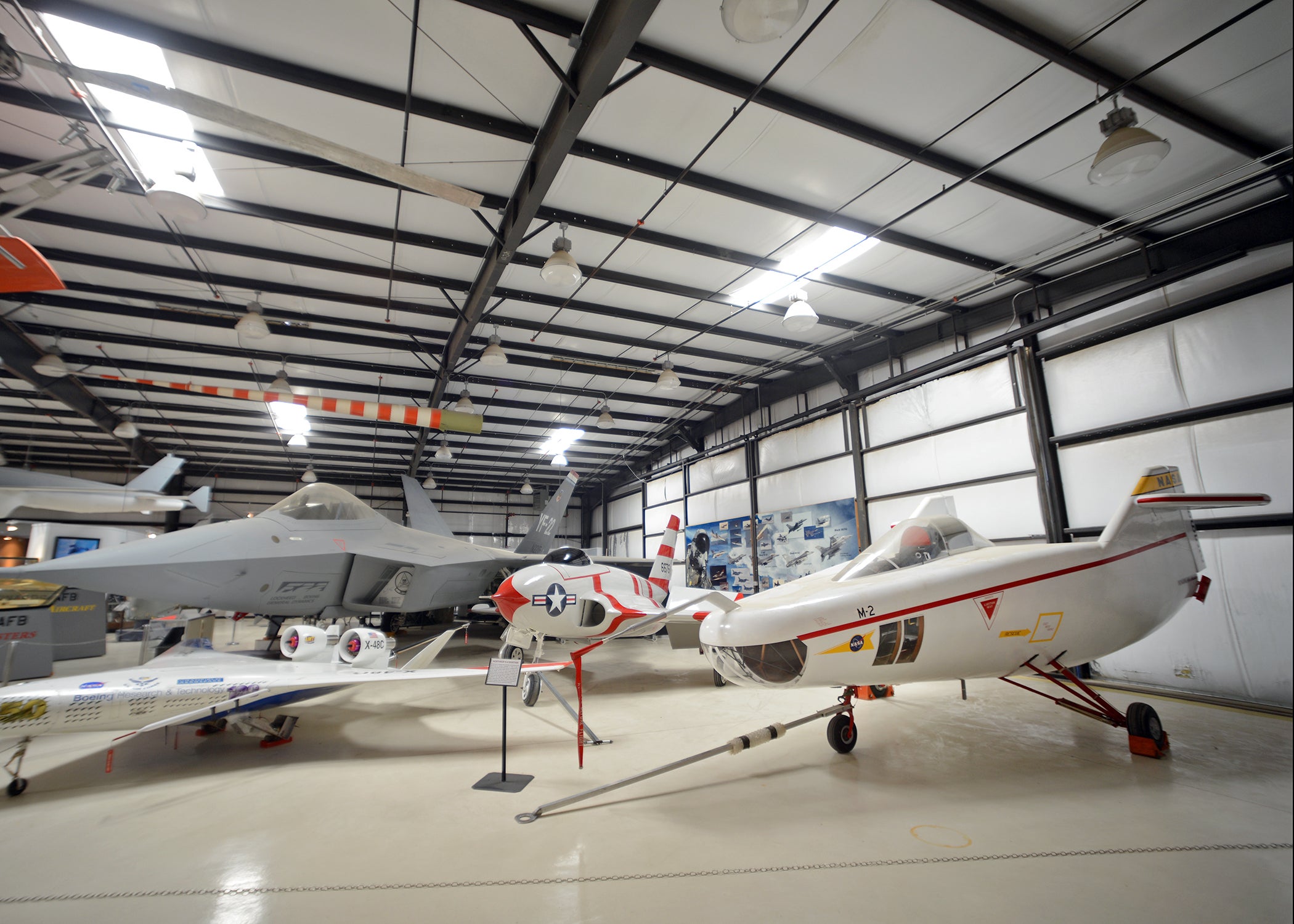
 ttyymmnn
> SBA Thanks You For All The Fish
ttyymmnn
> SBA Thanks You For All The Fish
08/07/2020 at 12:56 |
|
Ooh, that looks like the YF-22. Neat. It looked so different what that long pointy nose.
 SBA Thanks You For All The Fish
> ttyymmnn
SBA Thanks You For All The Fish
> ttyymmnn
08/07/2020 at 12:59 |
|
Yeah, apparently a lot of the “one off” stuff flown ended up in their collection— which in my “mind’s eye” looks like the closing scene of Indiana Jones...
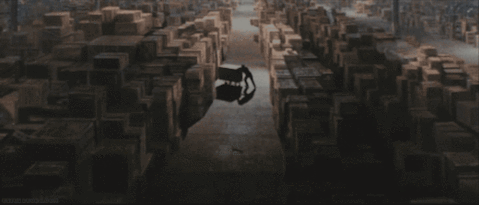
 SBA Thanks You For All The Fish
> user314
SBA Thanks You For All The Fish
> user314
08/07/2020 at 15:32 |
|
By the way, I don’t know if you’ve hung around on Roadrunners... but some of their pics of “back in the day” on these programs are astonishing.
http://roadrunnersinternationale.com/photos_a12_planes.html
 user314
> SBA Thanks You For All The Fish
user314
> SBA Thanks You For All The Fish
08/07/2020 at 15:42 |
|
Yeah, I have their article linked in the “special crates” line.
 SBA Thanks You For All The Fish
> user314
SBA Thanks You For All The Fish
> user314
08/07/2020 at 15:43 |
|
Missed it... Thanks!
Yeah, I just was rummaging around in the D-21 archive.
 user314
> SBA Thanks You For All The Fish
user314
> SBA Thanks You For All The Fish
08/07/2020 at 15:46 |
|
There’s at least one version of the pic where the mountains were airbrushed out to disguise where the planes were, so Lockheed/ the USAF/ the CIA were serious about keeping this on the QT.
 SBA Thanks You For All The Fish
> user314
SBA Thanks You For All The Fish
> user314
08/07/2020 at 15:57 |
|
Yeah, for sure. I can’t imagine, in the tenor of the time, having that many A12s out in the open at Palmdale either.
Those Roadrunners archives are pretty funny. They show the “bespoke” carrying-case transit shells they loaded the planes out of Burbank in to haul up CA-14 (The “Aerospace Freeway”) to the desert. Because they couldn’t FLY them out of BUR— too public.
Somewhere there’s a pic of the Space Shuttle frame being hauled up CA14 out of the LA Basin, too. This one shows Plant 42 in the background, but the Shuttle was headed to Edwards.
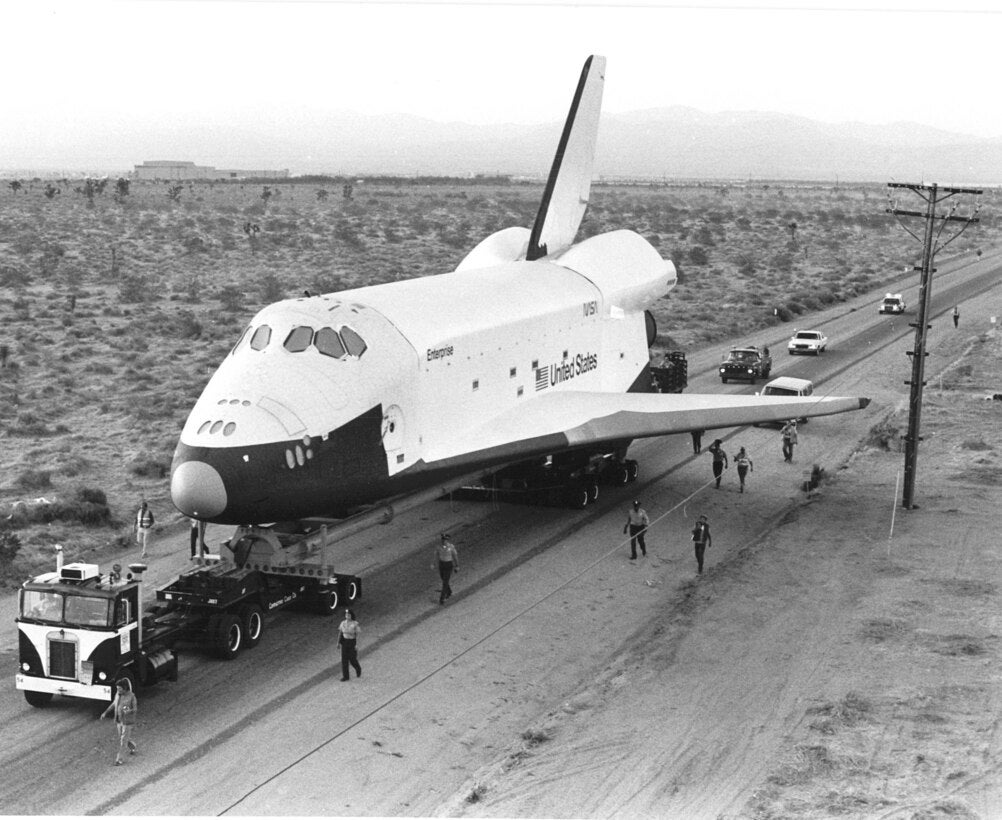
 ttyymmnn
> user314
ttyymmnn
> user314
08/11/2020 at 09:34 |
|
This might be an interesting photo for your Flightline series:
https://www.historynet.com/japans-fatally-flawed-air-forces-in-world-war-ii-2.htm
 user314
> ttyymmnn
user314
> ttyymmnn
08/11/2020 at 10:17 |
|
Ooooh, interesting. I should do a week of Boneyards....
 ttyymmnn
> user314
ttyymmnn
> user314
08/11/2020 at 11:06 |
|
Here’s another great shot for your series. If you don’t use it, let me know and I’ll use it.
 user314
> ttyymmnn
user314
> ttyymmnn
08/11/2020 at 11:39 |
|
I’m good after the double-shot from Lingayen field. It’s all yours.